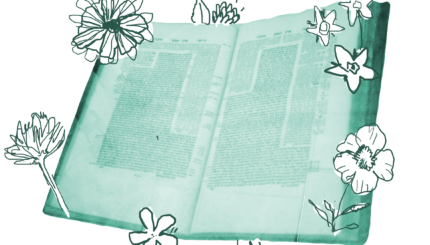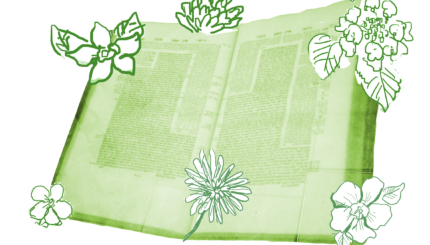Professor Lawrence Hoffman of Hebrew Union College-Jewish Institute of Religion, our most astute student of Jewish liturgy, describes the three great periods of creative Jewish prayer-making. The first, the classical period of the rabbis, provided what that age needed: limits. It offered interpretations of when, how, and in what way the prayers were to be arranged and recited. It gave us structure, keva, the framework and the details of Jewish worship. The second age, the beginnings of modernism in the 19th century, gave us a philosophy of Jewish prayer: what was meant and what could be meant by the words of our siddur (Jewish prayer book), as well as the “ideas” of the Bible and Talmuds. Concepts were an important need, and ideas in plenty were provided by European Jewish thinkers who gave Judaism a place in modern thought.
Now, says Hoffman, our community is no longer in particular need of limits or of ideas so much as of meaning, a way to connect the scattered threads of our separate lives and tie them to a meaningful pattern, what he calls “connecting the dots.” The tasks of structure and signification have been accomplished. Our generation and the one to come must perfect the performance of our liturgy, the realization of all our past by bringing our needs to God and sharing our deepest spiritual concerns with our community.
Abraham Joshua Heschel, the greatest interpreter of Jewish prayer in our century, has a somewhat different notion of prayer. He balances keva and kavanah, the fixity of our prayer-book and the spontaneity of our heart. He will surrender neither of the poles of Jewish worship. He believes that we must not only express our needs, but create them, that God is not here to do what we wish, but to help us wish to do what God needs doing. Our prayer is a way of coming to feel, as well as a way of expressing concerns. In principle, we can come to need what God needs, to feel what God feels, and to become what God wants us to be. Inwardness and community are both crucial, but so is hearing the music of God’s song and coming to experience God’s love. “Spirituality” is more than seeking for God within or between our several selves.
Two Opposite Poles in Jewish Prayer
There is a specific difficulty of Jewish prayer. There are laws: how to pray, when to pray, what to pray. There are fixed times, fixed ways, fixed texts. On the other hand, prayer is worship of the heart, the outpouring of the soul, a matter of kavanah (inner devotion). Thus, Jewish prayer is guided by two opposite principles: order and outburst, regularity and spontaneity, uniformity and individuality, law and freedom, a duty and a prerogative, empathy and self-expression, insight and sensitivity, creed and faith, the word and that which is beyond words. These principles are two poles about which Jewish prayer revolves. Since each of the two moves in the opposite direction, equilibrium can only be maintained if both are of equal force. However, the pole of regularity usually proves to be stronger than the pole of spontaneity and as a result, there is a perpetual danger of prayer becoming a mere habit, a mechanical performance, an exercise in repetitiousness. The fixed pattern and regularity of our services tends to stifle the spontaneity of devotion. Our great problem, therefore, is how not to let the principle of regularity impair the power of spontaneity (kavanah). It is a problem that concerns not only prayer but the whole sphere of Jewish observance. He who is not aware of this central difficulty is a simpleton; he who offers a simple solution is a quack.
In regard to most aspects of observance, Jewish tradition has for pedagogic reasons given primacy to the principle of keva; there are many rituals concerning which the law maintains that if a person has performed them without proper kavanah, he is to be regarded ex post facto as having fulfilled his duty. In prayer, however, halakhah [Jewish law] insists upon the primacy of inwardness, of kavanah over the external performance, at least theoretically. Thus, Maimonides declares, “Prayer without kavanah is no prayer at all. He who has prayed without kavanah ought to pray once more. He whose thoughts are wandering or occupied with other things need not pray until he has recovered his mental composure. Hence, on returning from a journey, or if one is weary or distressed, it is forbidden to pray until his mind is composed. The sages said that upon returning from a journey, one should wait three days until he is rested and his mind is calm, then he prays.”
Prayer is not a service of the lips; it is worship of the heart. “Words are the body, thought is the soul, of prayer.” If one’s mind is occupied with alien thoughts while the tongue moves on, then such prayer is like a body without a soul, like a shell without a kernel.
And so it is with words of prayer when the heart is absent.
Prayer becomes trivial when ceasing to be an act in the soul. The essence of prayer is agada, inwardness. Yet it would be a tragic failure not to appreciate what the spirit of halakhah does for it, raising it from the level of an individual act to that of an eternal intercourse between the people Israel and God; from the level of an occasional experience to that of a permanent covenant. It is through halakhah that we belong to God not occasionally, intermittently, but essentially, continually. Regularity of prayer is an expression of my belonging to an order, to the covenant between God and Israel, which remains valid regardless of whether I am conscious of it or not.
Heschel wrote: “How grateful I am to God that there is a duty to worship, a law to remind my distraught mind that it is time to think of God, time to disregard my ego for at least a moment! It is such happiness to belong to an order of the divine will. I am not always in a mood to pray. I do not always have the vision and the strength to say a word in the presence of God. But when I am weak, it is the law that gives me strength; when my vision is dim, it is duty that gives me insight” (Man’s Quest for God: Studies in Prayer and Symbolism, New York: Charles Scribner’s Sons, 1954, pp. 64-68).
From “Abraham Joshua Heschel after 25 Years” in Judaism: A Quarterly Journal of Jewish Life and Thought, Winter, 1998.
siddur
Pronounced: SIDD-ur or seeDORE, Origin: Hebrew, prayerbook.


